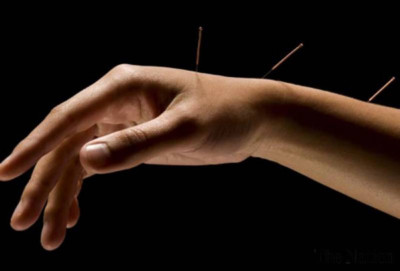Acupuncture Chemotherapy Neuropathy Relief
Acupuncture alleviates neuropathic symptoms due to chemotherapy-induced peripheral neuropathy (CIPN) in breast cancer survivors. A randomized-controlled trial was conducted at the Dana-Farber Cancer Institute (Boston, Massachusetts). The results demonstrate that an 8-week intensive acupuncture protocol (18 sessions) greatly reduces pain intensity levels, pain interference, and average pain levels. [1] The results also show significant improvements in CIPN-specific and general quality of life scores, functional assessment of cancer therapy neurotoxicity subscales, and brief pain inventory short-form scores. In addition, stage I–III breast cancer patients with persistent CIPN after chemotherapy had better neurotoxicity questionnaire sensory scores (PNQ) over waitlist control patients. Moreover, low intensity acupuncture treatment regimens contributed to clinically significant reductions in sensory CIPN symptoms.
For the first week, researchers inserted acupuncture needles (0.20 × 25 mm and 0.25 × 40 mm) into specified main points to obtain the deqi sensation. From the second week to the eighth week, electroacupuncture was applied to TB5 (Waiguan) and Baxie (second) or SP6 (Sanyinjiao) and LR3 (Taichong), bilaterally. Acupoints were applied according to locations of CIPN symptoms, using alternating 2–10 Hz for 30 minutes each session. If the patients were very comfortable with acupuncture, researchers added Ex-LE12 (Qiduan) as a treatment point. Secondary treatment points included Ex-LE10 (Bafeng), LI11(Quchi), ST36 (Zusanli), SP9 (Yinlingquan), K3 (Taixi), and Yintang.
Chemotherapy drugs like Taxanes and platinum agents (especially paclitaxel and docetaxel) are widely used in the early stage and metastatic stages of breast cancer treatment, which can cause CIPN. The symptoms of CIPN vary, but usually present with pain and paresthesia. The incidence of CIPN in patients with breast cancer ranges between 30% and 97%, which is related with poor physical function, increased risk of falling, and greater disability in cancer survivors.
Many studies focus on medications or dietary supplements to treat CIPN in patients with cancer, including pharmacologic agents like duloxetine, antidepressants, anticonvulsants, non-narcotic and narcotic analgesics, or dietary supplements like glutamine, glutathione, vitamin E, and vitamin B12. Many treatments cause different types of side effects such as fatigue, dizziness, insomnia, and nausea.
Acupuncture is proven to be safe and demonstrates efficacy in alleviation of CIPN symptoms, improving nerve system conduction, and reducing symptom distress. [2–5] Importantly, acupuncture effectively prevents deterioration of CIPN from grade II to grade III in breast cancer patients after finishing paclitaxel chemotherapy. [7]
References:
[1]Weidong Lu, Anita Giobbie‐Hurder, Rachel A. Freedman, Im Hee Shin, Nancy U. Lin, Ann H. Partridge, David S. Rosenthal, and Jennifer A. Ligibel. Acupuncture for Chemotherapy–Induced Peripheral Neuropathy in Breast Cancer Survivors: A Randomized Controlled Pilot Trial. The Oncologist 2020;25:310–318.
[2]11. Bao T, Seidman AD, Piulson L et al. A phase IIa trial of acupuncture to reduce chemotherapy-induced peripheral neuropathy severity during neoadjuvant or adjuvant weekly paclitaxel chemotherapy in breast cancer patients. Eur J Cancer 2018;101:12–19.
[3] Garcia MK, Cohen L, Guo Y et al. Electroacupuncture for thalidomide/bortezomib-induced peripheral neuropathy in multiple myeloma: A feasibility study. J Hematol Oncol 2014;7:41.
[4] Molassiotis A, Suen LKP, Cheng HL et al. A randomized assessor-blinded wait-list-controlled trial to assess the effectiveness of acupuncture in the management of chemotherapy-induced peripheral neuropathy. Integr Cancer Ther 2019; 18:1534735419836501.
[5] Han X, Wang L, Shi H et al. Acupuncture combined with methylcobalamin for the treatment
of chemotherapy-induced peripheral neuropathy in patients with multiple myeloma. BMC Cancer 2017;17:40.
[6]Xu WR, Hua BJ, Hou W et al. Clinical randomized controlled study on acupuncture for treatment of peripheral neuropathy induced by chemotherapeutic drugs [in Chinese]. Zhong guo Zhen Jiu 2010;30:457–460.
[7]11. Bao T, Seidman AD, Piulson L et al. A phase IIa trial of acupuncture to reduce chemotherapy-induced peripheral neuropathy severity during neoadjuvant or adjuvant weekly paclitaxel chemotherapy in breast cancer patients. Eur J Cancer 2018;101:12–19.



